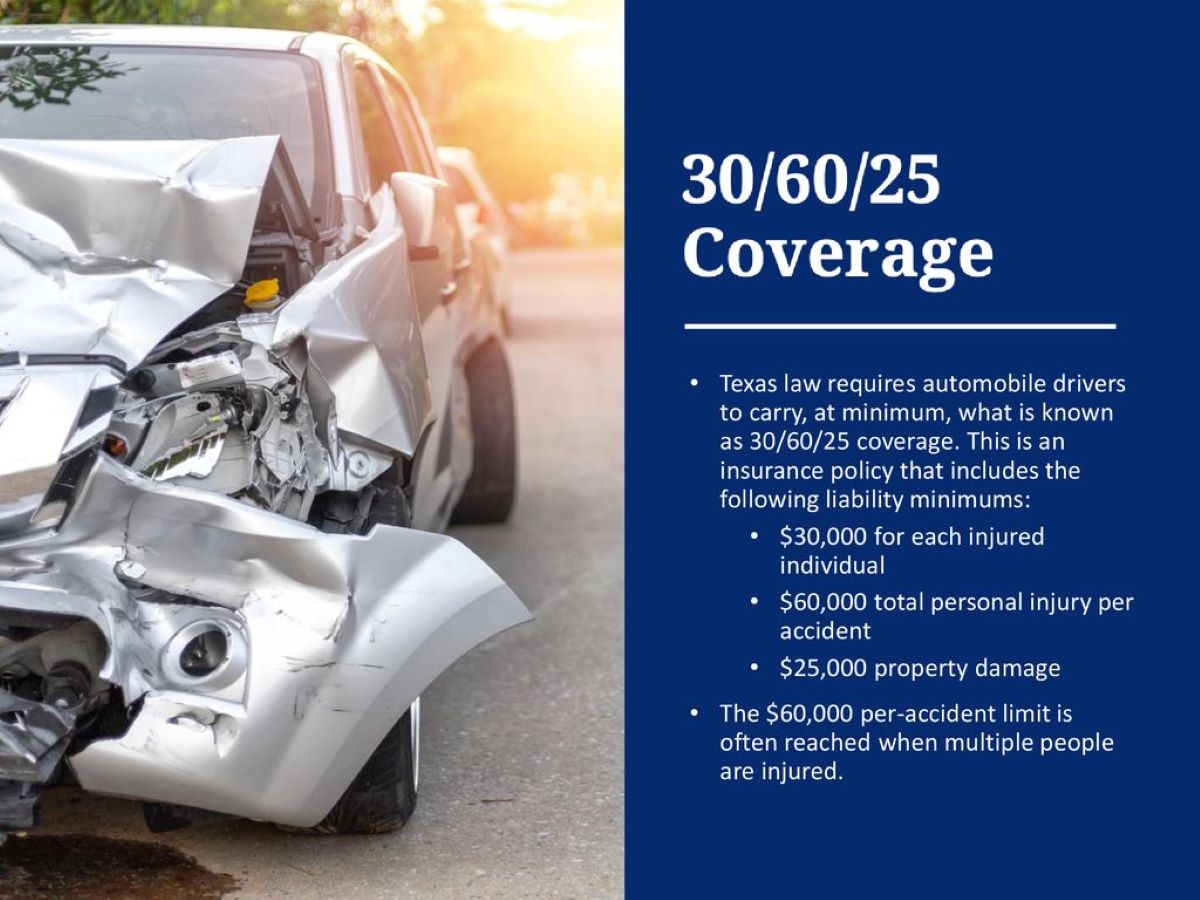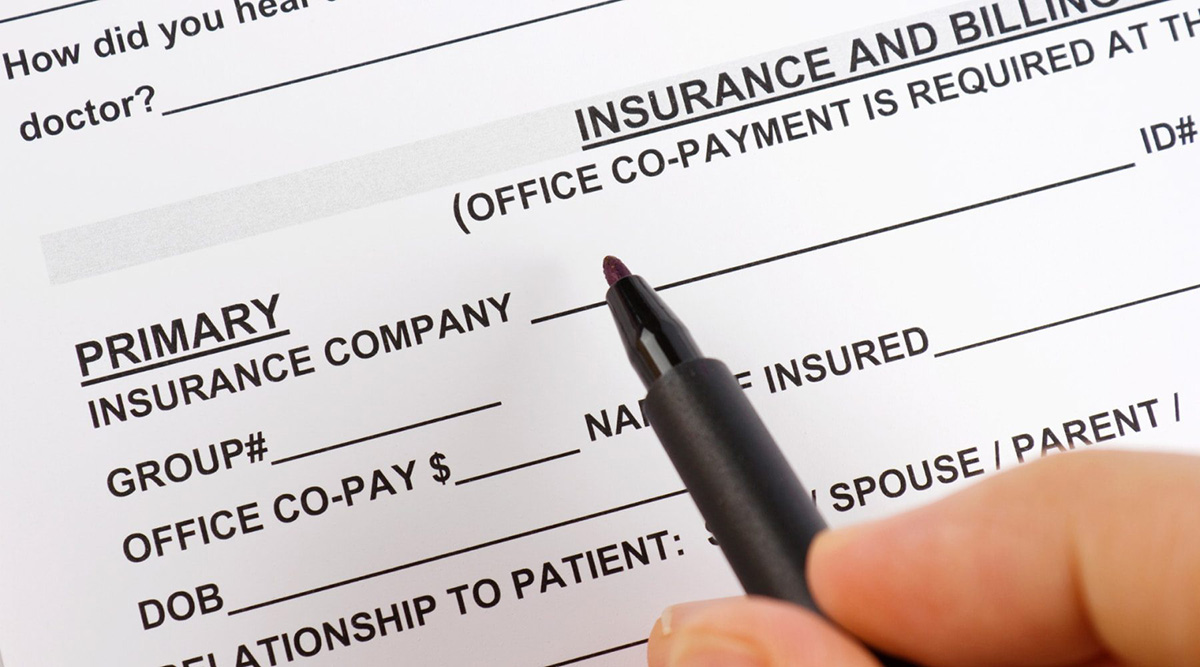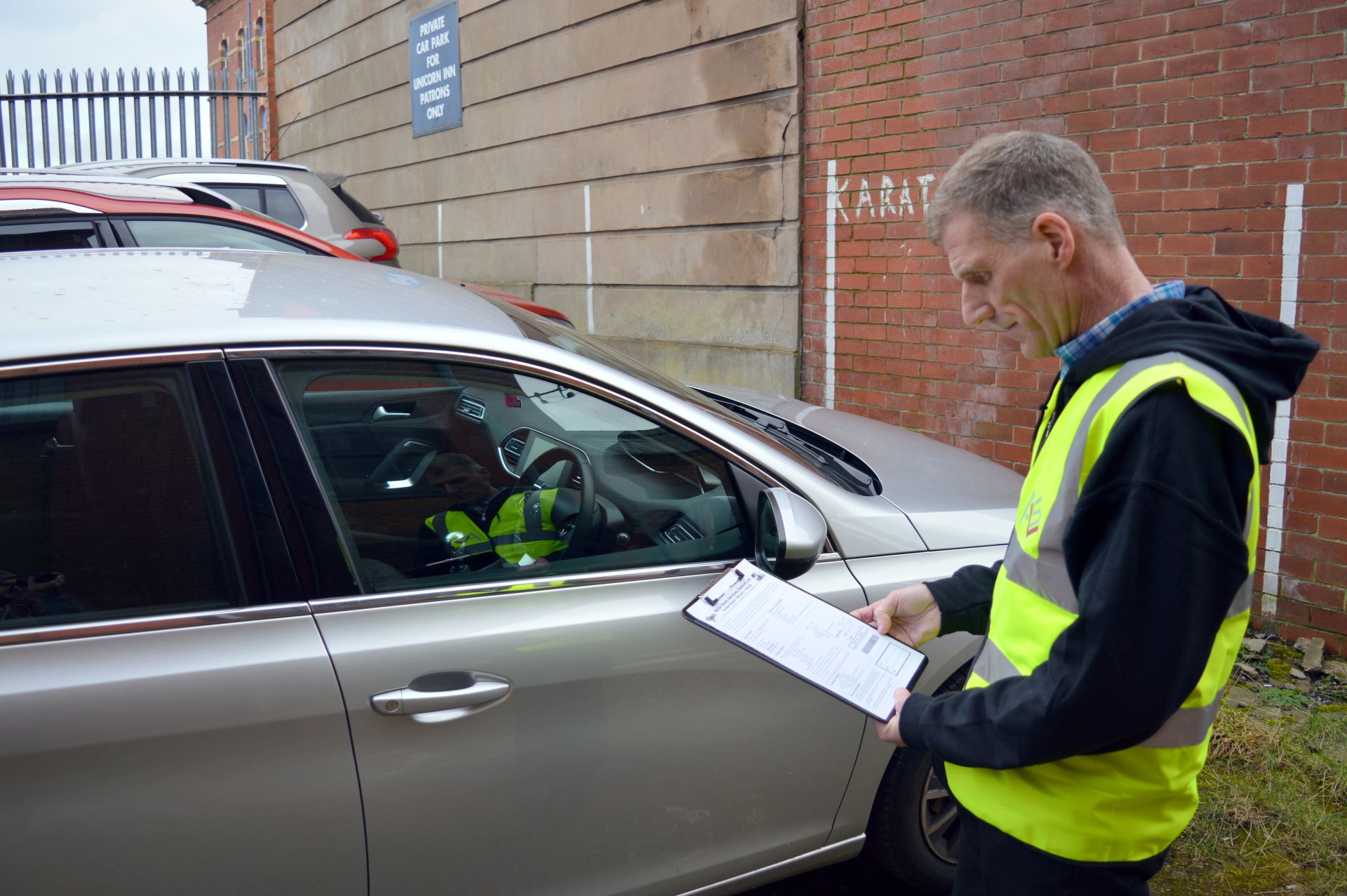

Finance
What Does 30/60 Insurance Mean?
Published: November 12, 2023
Learn what 30/60 insurance means in the world of finance and how it can protect you in case of an accident.
(Many of the links in this article redirect to a specific reviewed product. Your purchase of these products through affiliate links helps to generate commission for LiveWell, at no extra cost. Learn more)
Table of Contents
Introduction
When it comes to protecting yourself financially in the event of an accident, having the right insurance coverage is essential. One type of insurance that you may come across is 30/60 insurance. But what exactly does this term mean, and is it sufficient coverage for your needs?
Put simply, 30/60 insurance refers to a type of automobile liability insurance that provides coverage up to $30,000 for bodily injury per person and up to $60,000 for bodily injury per accident. This means that if you are found liable for an accident, your insurance company will cover up to $30,000 in medical expenses for each person injured, with a maximum limit of $60,000 for all injured parties combined.
It is important to note that 30/60 insurance is a liability-only coverage, meaning it does not provide any protection for your own vehicle or medical expenses. Its primary purpose is to cover the damages you may cause to others in an accident for which you are at fault.
Now that we have a basic understanding of what 30/60 insurance entails, let’s delve deeper into its coverage limitations, minimum requirements, and the benefits and downsides of having this type of insurance.
Definition of 30/60 Insurance
30/60 insurance, also known as “30/60/25” insurance, is a specific type of automobile liability insurance that is required by law in many states. The numbers 30 and 60 in its name refer to the coverage limits for bodily injury, while the number 25 represents the coverage limit for property damage.
As mentioned before, the first number, 30, represents the maximum amount of coverage available per person for bodily injury. This means that if someone is injured in an accident and you are found at fault, your insurance company will cover their medical expenses, up to a limit of $30,000.
The second number, 60, represents the maximum amount of coverage available per accident for bodily injury. If there are multiple people injured in an accident and you are at fault, your insurance company will cover their total medical expenses, up to a limit of $60,000.
It’s important to note that the coverage limits for bodily injury are separate from the coverage limit for property damage. The number 25 in 30/60/25 insurance represents the maximum amount of coverage available per accident for any property damage caused by the policyholder. This includes damage to other vehicles, buildings, or any other property involved in the accident.
It’s crucial to understand that 30/60 insurance only covers the damages you may cause to others in an accident for which you are at fault. It does not provide any coverage for your own vehicle or medical expenses. For that, you would need additional coverage, such as collision insurance or personal injury protection.
Next, we will explore the limitations of 30/60 insurance and what minimum requirements exist for this type of coverage.
Coverage Limitations
While 30/60 insurance provides a certain level of coverage, it’s important to understand its limitations. The coverage limits of 30/60 insurance may seem substantial, but they may not be sufficient in certain situations.
One of the limitations of 30/60 insurance is that it may not fully cover the expenses related to severe accidents. In cases where there are multiple individuals with severe injuries requiring extensive medical treatment, the coverage limit of $30,000 per person and $60,000 per accident may fall short. Medical bills can quickly add up, especially in cases involving surgeries, long-term hospital stays, or rehabilitation.
Another limitation is that 30/60 insurance does not provide coverage for your own medical expenses or damage to your vehicle. If you are at fault in an accident and sustain injuries or your vehicle is damaged, you would need additional insurance coverage, such as personal injury protection (PIP) or collision insurance, to cover these expenses.
Furthermore, 30/60 insurance may not be sufficient to cover the property damage in some accidents. The coverage limit of $25,000 for property damage may not be enough to repair or replace expensive vehicles or structures. In such cases, you could find yourself responsible for paying the remaining costs out of your own pocket.
It’s crucial to evaluate your individual circumstances and assess the potential risks before determining the appropriate coverage limits for your insurance policy. While 30/60 insurance is a commonly required minimum coverage, it may be wise to consider higher limits or additional types of coverage for greater protection.
Next, we will discuss the minimum requirements for 30/60 insurance and the legal obligations associated with this type of coverage.
Minimum Requirements for 30/60 Insurance
Each state in the United States has its own laws and regulations regarding minimum insurance requirements for drivers. While the specific requirements may vary, many states mandate that drivers carry a minimum of 30/60 insurance or similar liability coverage.
These minimum requirements are put in place to ensure that drivers have some level of financial protection in the event of an accident. By having insurance coverage, drivers can potentially cover the costs of medical expenses and property damage they may cause to others.
It’s important to note that while 30/60 insurance is the minimum requirement in some states, other states may have different coverage limits. For example, some states may require 25/50 insurance, which provides coverage up to $25,000 per person and $50,000 per accident for bodily injury.
It’s crucial to comply with your state’s minimum insurance requirements to avoid penalties or legal consequences. Failure to maintain the mandated insurance coverage can result in fines, license suspensions, or even legal trouble.
While 30/60 insurance may meet the minimum requirements, it’s important to assess your personal circumstances and evaluate whether this level of coverage adequately protects your assets and financial well-being. Depending on your individual situation, it may be advisable to consider higher coverage limits or additional types of coverage.
Additionally, it’s important to note that minimum requirements for insurance may not fully cover the potential costs of an accident. As mentioned earlier, severe accidents can result in extensive medical bills and property damage that may exceed the coverage limits of 30/60 insurance.
Before making a decision on your insurance coverage, it’s recommended to consult with an insurance professional who can assess your specific needs and guide you towards the most appropriate coverage options.
Next, we will explore the benefits of 30/60 insurance and why it can be a valuable asset to have.
Benefits of 30/60 Insurance
While 30/60 insurance may have its limitations, it does offer several benefits that make it a valuable asset for drivers.
1. Legal Compliance: One of the primary benefits of 30/60 insurance is that it meets the minimum legal requirements in many states. By having this level of coverage, you can ensure that you are compliant with the law, avoiding potential fines, license suspensions, or legal consequences.
2. Financial Protection: 30/60 insurance provides financial protection in the event that you are at fault in an accident. It helps cover the costs of bodily injury and property damage you may cause to others, up to the coverage limits. This can help safeguard your personal assets and prevent you from incurring significant out-of-pocket expenses in a liability claim.
3. Affordable Option: 30/60 insurance is typically more affordable compared to higher coverage limits or additional types of insurance. This can be advantageous for drivers who have budgetary constraints or who have lower risk profiles. It allows you to maintain a basic level of coverage while managing your insurance premiums.
4. Peace of Mind: Having any level of insurance coverage, including 30/60 insurance, offers peace of mind. It provides a safety net and reassurance knowing that you have some level of protection in case an accident occurs. Knowing that you are financially covered can alleviate stress and allow you to focus on other aspects of your life.
It’s important to note that while 30/60 insurance offers these benefits, it may not be sufficient in all scenarios. Depending on your circumstances and risk profile, it may be advisable to consider higher coverage limits or additional types of insurance to ensure better protection.
Ultimately, the decision to opt for 30/60 insurance or explore other coverage options depends on your individual needs, budget, and risk tolerance. Consulting with an insurance professional can provide valuable insights and guidance to help you make an informed decision.
Next, we will discuss the downsides of 30/60 insurance and potential considerations before choosing this coverage.
Downsides of 30/60 Insurance
While 30/60 insurance offers some benefits, it’s important to consider the downsides before choosing this coverage option. Understanding its limitations can help you make an informed decision about your insurance needs.
1. Insufficient Coverage Limits: One of the main downsides of 30/60 insurance is that the coverage limits may not be enough to cover the full costs of a serious accident. Medical expenses and property damage can quickly surpass the coverage limits, leaving you personally responsible for any additional costs. This can put your personal assets at risk and create a significant financial burden.
2. No Protection for Your Own Vehicle: Another downside of 30/60 insurance is that it only provides coverage for damages you may cause to other vehicles or property. It does not protect your own vehicle in the event of an accident. If your vehicle is damaged or totaled, you will need additional coverage, such as collision insurance, to cover the costs of repairs or replacement.
3. Limited Protection for Personal Injuries: 30/60 insurance does not provide coverage for your own medical expenses or injuries sustained in an accident, regardless of fault. If you are injured in an accident, you will need additional coverage, such as personal injury protection (PIP) or medical payments coverage, to cover your medical bills and related expenses.
4. Potential Out-of-Pocket Expenses: Given the lower coverage limits of 30/60 insurance, you may find yourself responsible for paying out-of-pocket costs if the damages exceed the coverage limits. This can add financial stress and impact your financial stability, especially in cases of severe accidents or lawsuits.
5. Limited Flexibility: Choosing 30/60 insurance means accepting the predetermined coverage limits set by the policy. This may not be customizable to your specific needs or risk profile. Opting for higher coverage limits or additional coverage options can provide more flexibility and tailor your insurance to better suit your circumstances.
Before selecting 30/60 insurance, it’s essential to assess your individual needs, evaluate potential risks, and consider the impact of these downsides. By weighing the benefits against the limitations, you can make an informed decision regarding the level of coverage that best protects you financially.
Next, we will explore whether 30/60 insurance is enough or if additional coverage is necessary.
Is 30/60 Insurance Enough?
Deciding whether 30/60 insurance is enough for your needs requires careful consideration of your specific circumstances, risk tolerance, and financial situation. While 30/60 insurance meets the minimum legal requirements in many states, it may not provide sufficient coverage in certain situations.
For minor accidents where only one or two individuals sustain minor injuries, 30/60 insurance may provide adequate coverage. However, in more severe accidents involving multiple parties or significant property damage, the coverage limits of 30/60 insurance may fall short.
If the medical expenses and property damage exceed the coverage limits, you could be personally responsible for the remaining costs. This can potentially lead to financial hardship and put your personal assets at risk.
Additionally, it’s important to consider the potential for lawsuits. In accidents where individuals sustain severe injuries or long-term disabilities, they may pursue legal action to seek compensation beyond the coverage limits of your 30/60 insurance. This can result in personal liability and the need for additional funds to cover legal expenses and settlements.
Therefore, if you have significant personal assets or a higher risk profile, it’s advisable to consider higher coverage limits or additional types of insurance coverage. This can provide you with better protection and peace of mind knowing that you are adequately covered in case of a more substantial accident.
Factors to consider when determining if 30/60 insurance is enough include:
- The value of your personal assets
- Your risk tolerance
- Your driving habits and history
- The likelihood of accidents in your area
- Your budget for insurance premiums
Taking these factors into account can help you make an informed decision about whether 30/60 insurance is sufficient or if you should opt for higher coverage limits or additional types of coverage.
Consulting with an insurance professional can also be helpful in assessing your individual needs and guiding you towards the most appropriate coverage options for your specific situation.
Next, we will explore important factors to consider before choosing 30/60 insurance or any other coverage option.
Factors to Consider Before Choosing 30/60 Insurance
Before deciding on 30/60 insurance as your coverage option, it’s important to consider several factors that can help you make an informed decision.
1. Personal Assets: Evaluate the value of your personal assets, such as your home, savings, and investments. If you have substantial assets, it may be advisable to consider higher coverage limits or additional coverage to protect those assets in case of a liability claim.
2. Risk Profile: Assess your personal risk profile. Factors such as your driving history, habits, and the likelihood of accidents in your area should be considered. If you have a higher risk profile, it may be wise to consider higher coverage limits to ensure you are adequately protected.
3. Budget: Consider your budget for insurance premiums. While higher coverage limits and additional coverage options provide better protection, they also come with higher premiums. Evaluate your financial situation to determine what you can comfortably afford in terms of insurance costs.
4. Potential Medical Expenses: Think about the potential costs of medical expenses in case of an accident. Assess whether the coverage limits of 30/60 insurance would adequately cover the medical bills for potential injuries to yourself or others involved in an accident.
5. Laws and Requirements: Familiarize yourself with the insurance requirements and laws in your state. While 30/60 insurance may be the minimum requirement, some states have higher mandated coverage limits. Ensure that you are meeting the legal obligations and consider whether higher coverage limits may be advisable.
6. Peace of Mind: Consider your level of comfort and peace of mind with 30/60 insurance. If you prefer greater financial protection and want to minimize the risk of personal liability, opting for higher coverage limits or additional coverage options can offer greater peace of mind.
Remember, insurance serves as a means of protection and financial security. It’s important to customize your coverage based on your individual needs, risk profile, and financial circumstances. Consulting with an insurance professional can provide valuable insights and guidance in making the right decision for your specific situation.
Next, we will conclude the article by summarizing the key points discussed and offering final thoughts.
Conclusion
Choosing the right insurance coverage is essential for protecting yourself financially in the event of an accident. While 30/60 insurance may meet the minimum legal requirements in many states, it’s important to carefully evaluate whether it provides sufficient coverage for your needs.
30/60 insurance offers benefits such as legal compliance, financial protection, affordability, and peace of mind. However, it also comes with limitations, including insufficient coverage limits, no protection for your own vehicle or injuries, potential out-of-pocket expenses, and limited flexibility.
When deciding on 30/60 insurance or any other coverage option, important factors to consider include your personal assets, risk profile, budget, potential medical expenses, and the laws and requirements in your state. Assessing these factors will help determine if 30/60 insurance provides adequate protection or if higher coverage limits or additional coverage options are necessary.
Ultimately, the decision of whether 30/60 insurance is enough depends on your individual circumstances and comfort level. Consulting with an insurance professional can provide valuable insights and guidance to help you make the right choice for your specific needs.
Remember, insurance is about managing risks and protecting yourself financially. By evaluating your situation and understanding the benefits and limitations of 30/60 insurance, you can make an informed decision to ensure you have appropriate coverage that offers peace of mind and financial security.
Keep in mind that insurance requirements and laws can vary by state, so it’s important to stay informed about the regulations in your specific jurisdiction to maintain compliance and make the best insurance decisions.
In conclusion, carefully consider your needs, assess the risks, and make an informed decision when choosing your insurance coverage. Whether you opt for 30/60 insurance or explore other options, prioritize your financial protection and peace of mind on the road.














